15 Interesting & Fun Cooper’s Hawk Facts You Never Knew
Last Updated on
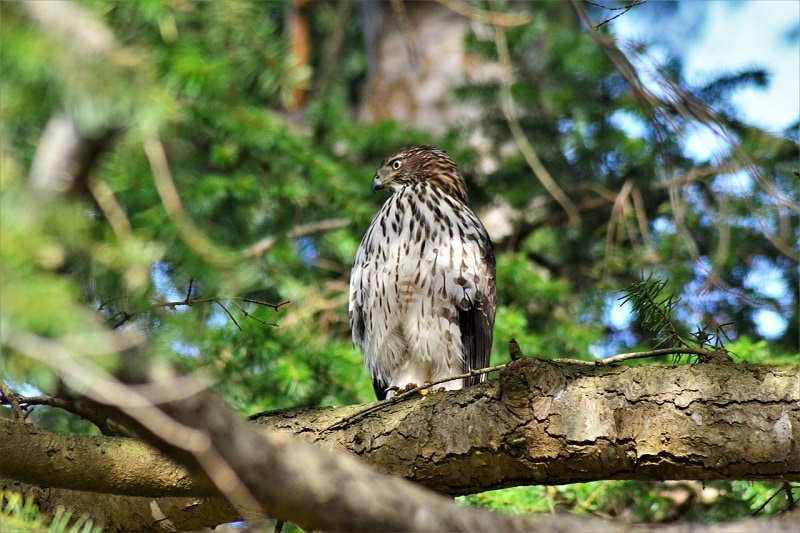
Some communities believe that hawks are messengers from a different realm, sent by the spirits looking to reach out to those who yearn for strength or encouragement while facing various trials and tribulations. These birds also represent protection, determination, and more importantly, leadership.
But that’s not all there is to know about hawks. If we narrow it down to just Coopers, you’ll learn that this is a special kind of hawk. They say it only comes to those who are willing to change, in order to learn the new lessons that life has to offer. In other words, it’s a species that holds the power of both flexibility and adaptability.
We’ll dive into the spiritual aspects of the Cooper’s hawk in a different article, though. Today, we want to focus more on the facts that have been shared by ornithologists from around the world.
The 15 Interesting and Fun Cooper’s Hawk Facts You Never Knew
1. The daily food intake of a Cooper is equivalent to 12% of its body weight
Let’s assume for a quick second that you weigh approximately 120 pounds. That would mean you’ll have to consume about 14 pounds of food, daily, to match the Cooper’s daily intake. And for the record, 14 pounds is the same as eating four to five large pizzas.
Nevertheless, that doesn’t mean that they eat that much food on a daily basis. It all depends on the time of the year. If it’s the cold season, they’ll eat more because they need more energy to heat up their body.
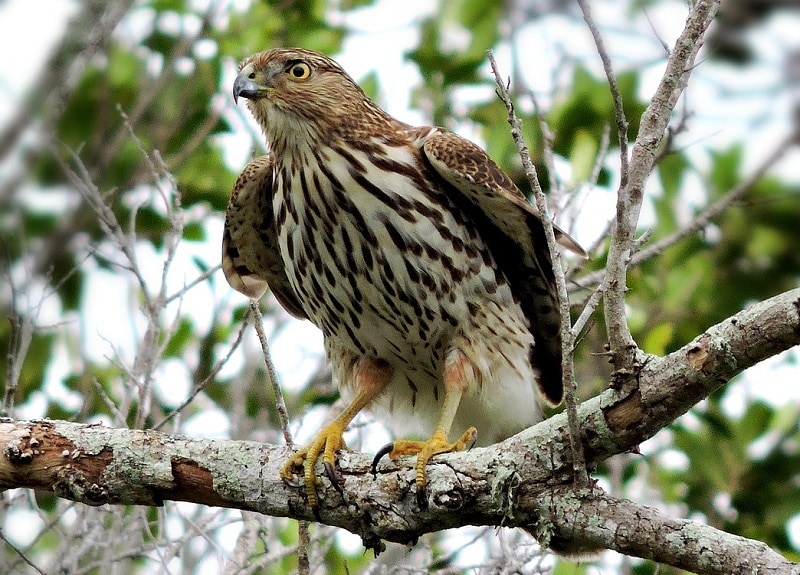
2. This species is one of the smallest hawks on the continent
The tiniest members of the hawk family are the American Kestrels and the Sharp-shinned hawks. On average, Kestrels are 10 inches long and have a wingspan that’s 23 inches wide. Their counterparts, the Sharp-shinned hawks, are 12 inches long, with a wingspan that’s 25 inches wide.
The Coopers are the third tiniest in that family, as they are 19 inches long, with a wingspan that’s 35 inches wide. Needless to say, that doesn’t mean that they are not revered in their community. They have all the features that define a predator, and more.
3. Coopers are not a rare species
Data collected in recent years have indicated that we have about 100,000 to 1,000,000 individual birds out there. And if that conversation shifts to focus on their breeding population, then the total number is roughly 700,000 birds.
Besides Mexicans, Canadian residents living in the southern parts of their country can confirm that the Cooper’s hawk is a common species in those regions. They are also widely spread in the United States, but they are typically found in forested habitats.

4. Cooper’s are aggressive
This shouldn’t come as a surprise, considering they are sometimes called “The Avian Outlaws.” These predators have always been bold and aggressive towards other species, and you can easily tell by studying their dietary habits. For generations, they’ve perfectly played the villainous role and even gone as far as murdering their cousins, American Kestrels.
5. Cooper’s hawks are monogamous
Nature always has a way of balancing itself. Birds don’t have to be monogamous, but some of them have to so that they can offer loads of parental care and protection to their young ones. Such species always breed nestlings that are not only helpless, but also altricial.
The Cooper’s hawk falls in that category. The males prefer sticking to one partner, to ensure they have all they need to protect the younglings. They’ll also choose a suitable nesting site and feed the female during incubation.

6. The female Cooper is larger than the male
Cooper’s do exhibit some degree of sexual dimorphism. Simply put, this is the observable difference in the physical form between the sexes of the same species. For instance, if you take a look at mammals, the males are usually larger than females.
But it’s the opposite, in the case of the Cooper. The female Cooper weighs more, and appears larger than the male. That’s what makes life a tad bit dicey for the male Cooper. You see, because the females are physically superior, the males have no choice otherwise but to be submissive. They won’t even dare approach them during mating season until they hear a call of reassurance.
7. Coopers are very territorial
The species is very territorial, and this behavior will be evident in the presence of other raptors. They’ll also be ready to take it a notch higher, should they sense anyone or anything approaching their nesting grounds.
With the help of their well-adapted long tails, they normally maneuver through the forest from time to time, to ensure nothing dangerous lurks in the shadows.
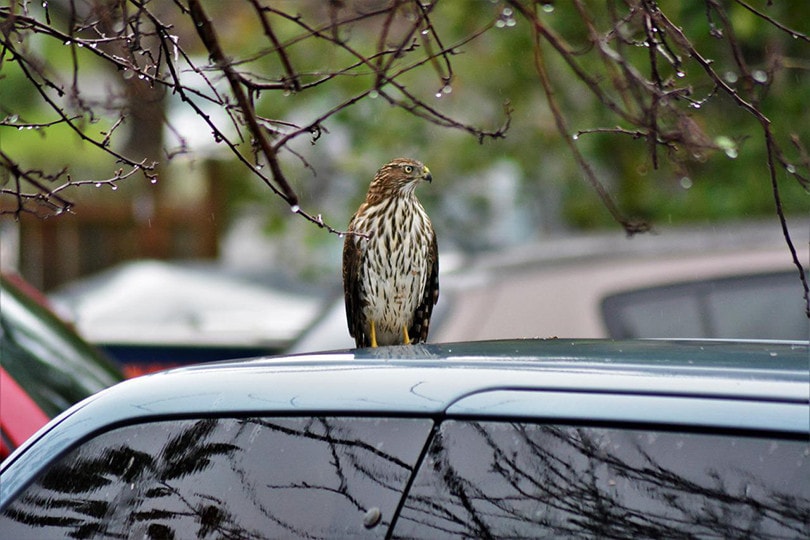
8. Coopers are partially migratory
As a practice, partial migration is where a considerable proportion of the species migrates, while the rest remain behind to survive or weather out the storm. That’s what the Coopers do. If their food stores are running low, or if they don’t like the changes in regional temperature, some of them will migrate while the rest survive on what’s available.
Breeding is also a reason for migration in their community. They’ll move to parts of the country that offer suitable conditions to raise their young ones, and only travel back when they are old enough to fend for themselves.
9. Coopers are fastidious groomers
If you spot a cooper during the day, it will either be stalking prey, feeding, or preening. You’ll often see them perched somewhere, busy keeping ectoparasites in check. They usually do this 9 to 11 times a day, for close to 20 minutes.
And it seems like this maintenance behavior is inherently coded in their DNA, seeing as the juvenile Cooper occasionally lays on tree branches, trying to eliminate pesky parasites with the help of the sun’s heat.
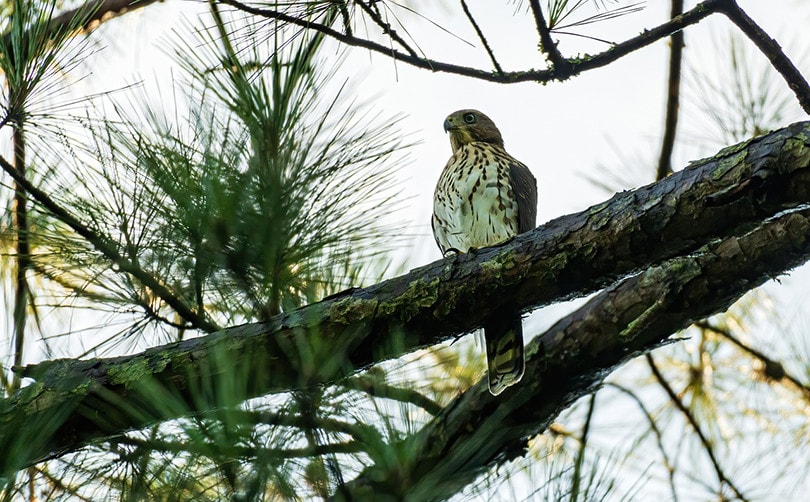
10. Coopers have no problem living with humans
You’d think their population would dwindle to a point of extinction when their habitats were invaded. But that wasn’t the case, even though they were adversely affected. They slowly started building homes in cities and towns and quickly propagated to increase their numbers.
Some people believe the reason why it was so easy for them to settle down in urban and suburban settings is because food was readily available. They loved hunting the Mourning Dove and Rock Pigeons.
11. The lifespan of this species is 10 to 12 years
As per our current records, the oldest Cooper was fortunate enough to live for 20 years and 4 months. And we’re certain that this data is accurate, since it was tagged in 1986, and died in 2006.
It’s normal for the lifespan of a species to vary, considering it hinges on a number of factors. Some of the common factors include nutrition, climate, their position on the food chain, and avian diseases.
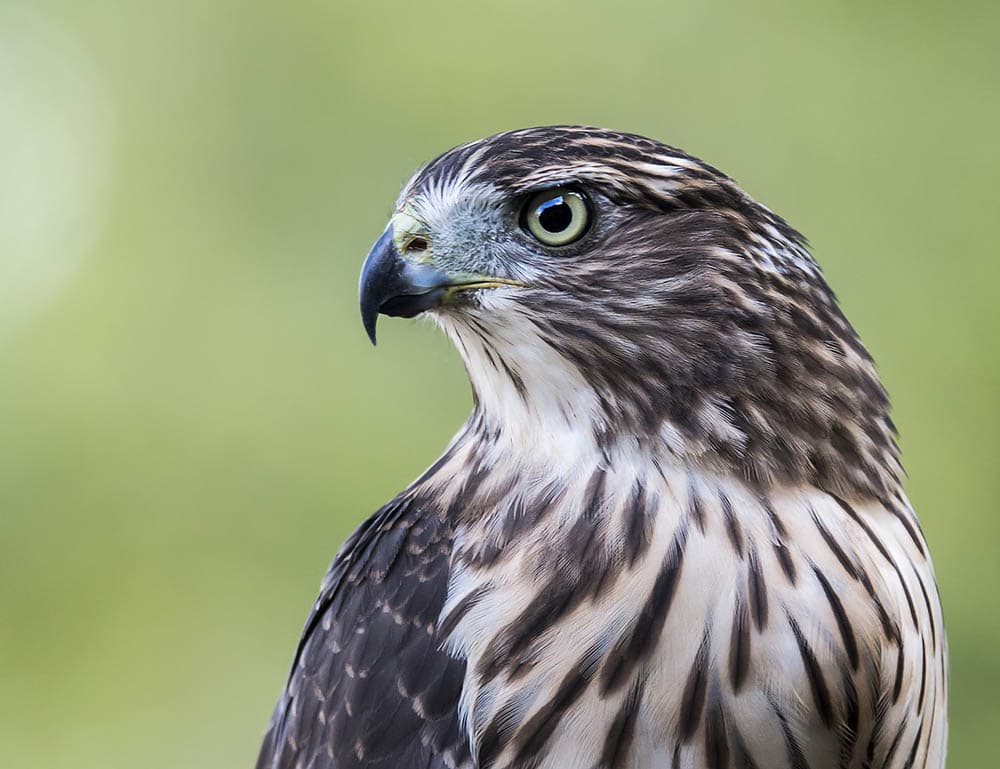
12. The Cooper’s conservation status has been marked as “least concern”
What that means is, for the past couple of years their population has been steadily increasing. There’s also no endangerment or threat detected, with regards to this species. Nonetheless, you should know hunting, poisoning, caging, trapping, or even petting a Cooper’s hawk is illegal.
This family has for a long time been protected by the 1918 Migratory Bird Treaty Act, a federal law that only gives the Department of Fish and Wildlife Service the power to give legal hunting or petting permission. You’re not even allowed to keep the eggs or use them for commercial purposes.
13. Charles Lucien Bonaparte gave this species its name
Charles Lucien Bonaparte was an ornithologist, biologist, and French national who developed an enthusiasm for natural history. He loved studying birds and meeting new people. In 1828, he got an invitation from the Emperor of France, who wished to learn more about animals and birds. They met at the Fontainebleau Grounds, where he also met William Cooper—someone who later on became one of his closest friends.

14. Coopers have perfected the art of hunting
Not all raptor species hunt using the same technique. They’ll only apply what’s efficient, since they all have unique features. The Cooper, for example, will remain perched on a branch and wait for its prey to pass by.
The minute it spots one, it will swoop down in a short arc, and then seize it using its talons. Those talons are so strong that they are able to kill the prey just by squeezing it. If the prey is still conscious, they’ll drown it and hold it underwater, until they’re sure it’s not breathing.
15. Coopers have a flight speed of 50mph
Some avid birders even believe that they’ve seen them fly faster, while being chased by predators in the forest. Flying that fast in a habitat characterized by dense vegetation could be the reason why most of them tend to have fractures in their wishbones or furcula.

Conclusion
Identifying the Cooper shouldn’t be a problem, unless you’re looking for a juvenile. The adults are blue-gray with red streaks towards their lower parts, while the juveniles have distinct brown streaks around their breast region. In fact, that’s the reason why they often appear hooded.
We hope you learned a thing or two from the facts that we’ve shared today. If you have any questions or want to contribute more facts to this piece, feel free to drop us a line.
You might Interested:
- Interesting and Fun Northern Cardinal Facts
- Interesting and Fun Mockingbird Facts
- Interesting & Fun Facts About Woodpeckers
Featured Image Credit: bryanhanson1956, Pixabay
Table of Contents
- The 15 Interesting and Fun Cooper’s Hawk Facts You Never Knew
- 1. The daily food intake of a Cooper is equivalent to 12% of its body weight
- 2. This species is one of the smallest hawks on the continent
- 3. Coopers are not a rare species
- 4. Cooper’s are aggressive
- 5. Cooper’s hawks are monogamous
- 6. The female Cooper is larger than the male
- 7. Coopers are very territorial
- 8. Coopers are partially migratory
- 9. Coopers are fastidious groomers
- 10. Coopers have no problem living with humans
- 11. The lifespan of this species is 10 to 12 years
- 12. The Cooper’s conservation status has been marked as “least concern”
- 13. Charles Lucien Bonaparte gave this species its name
- 14. Coopers have perfected the art of hunting
- 15. Coopers have a flight speed of 50mph
- Conclusion
About the Author Robert Sparks
Robert’s obsession with all things optical started early in life, when his optician father would bring home prototypes for Robert to play with. Nowadays, Robert is dedicated to helping others find the right optics for their needs. His hobbies include astronomy, astrophysics, and model building. Originally from Newark, NJ, he resides in Santa Fe, New Mexico, where the nighttime skies are filled with glittering stars.
Related Articles:
10 Types of Hummingbirds in Arkansas (With Pictures)
8 Types of Hummingbirds in Nebraska (With Pictures)
5 Types of Hummingbirds in Idaho (With Pictures)
3 Types of Hummingbirds in Mississippi (With Pictures)
8 Types of Hummingbirds in Kansas (With Pictures)
5 Types of Hummingbirds in West Virginia (With Pictures)
5 Types of Hummingbirds in Ohio (With Pictures)
Where Do Nuthatches Nest? Nuthatch Nesting Habits Explained
